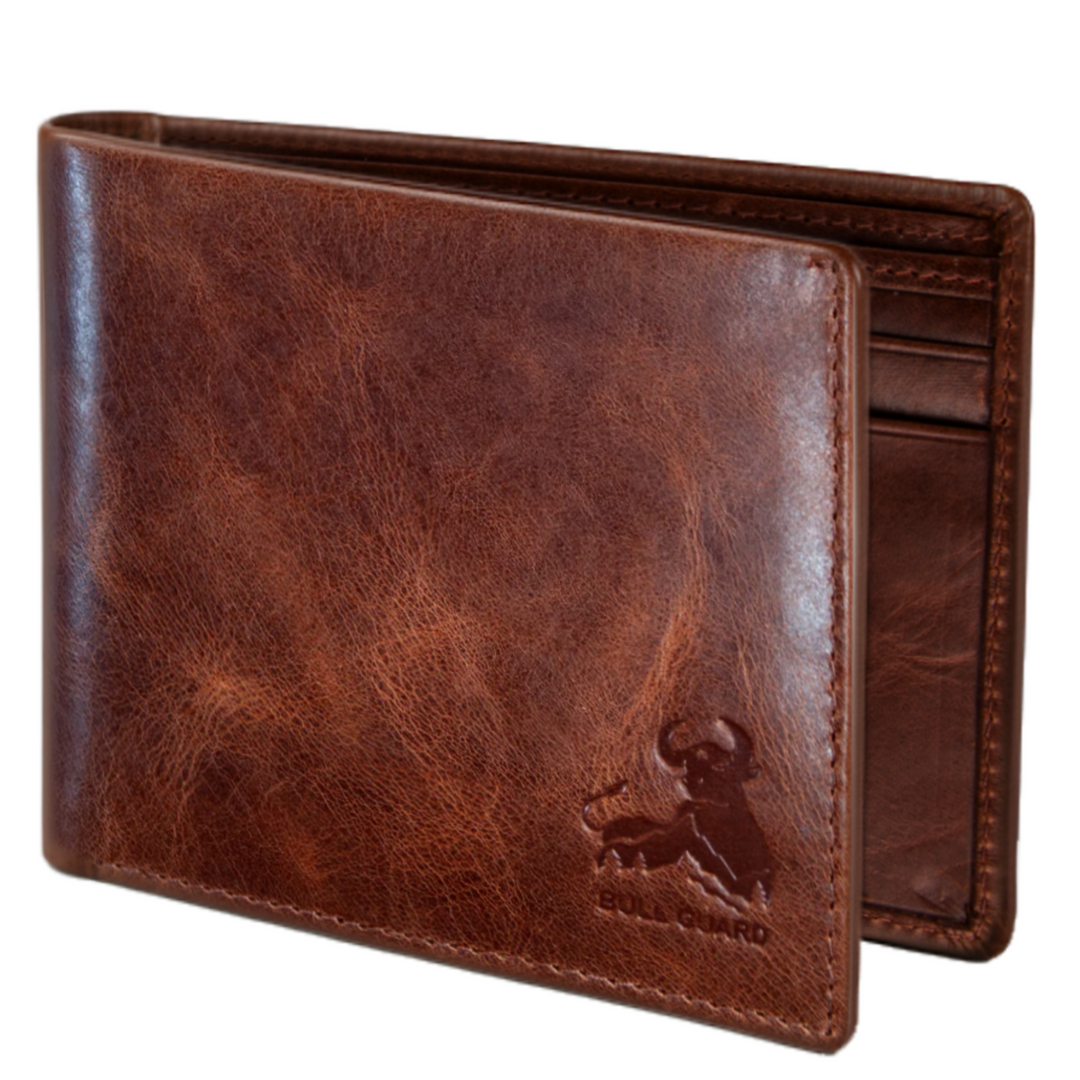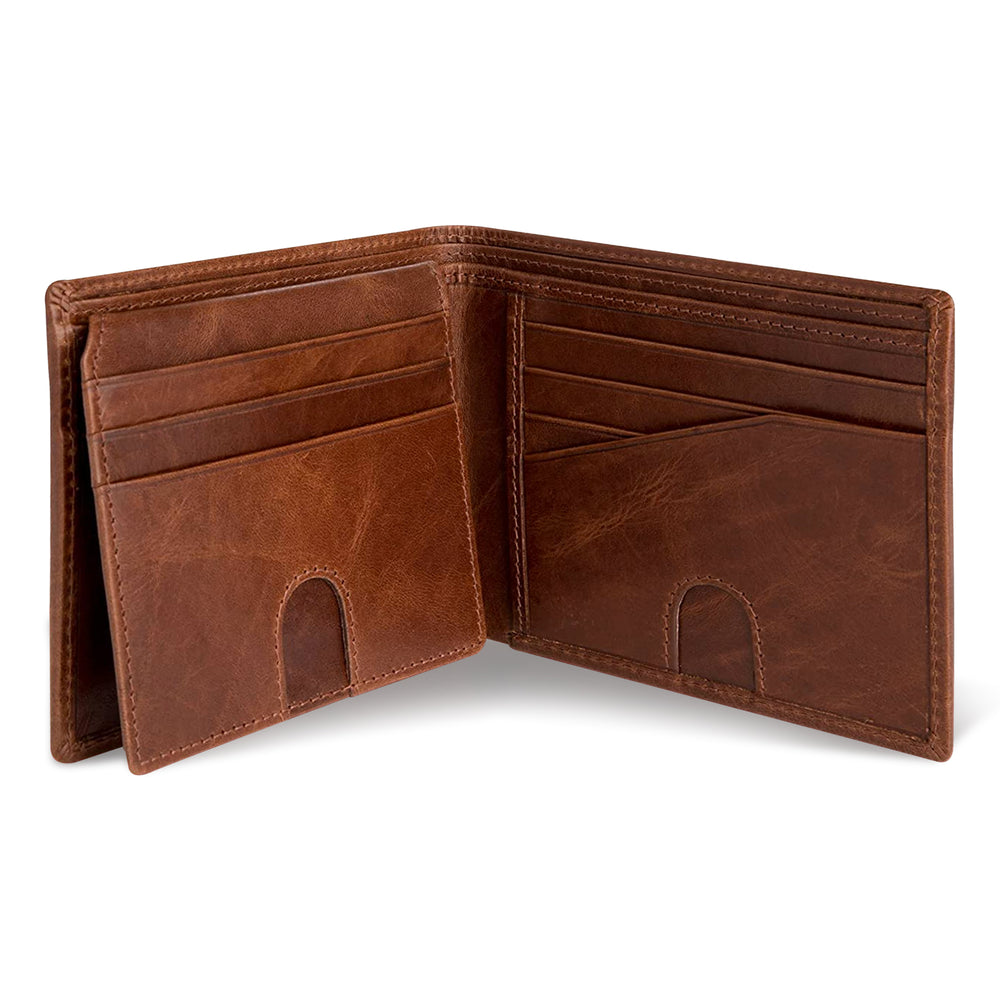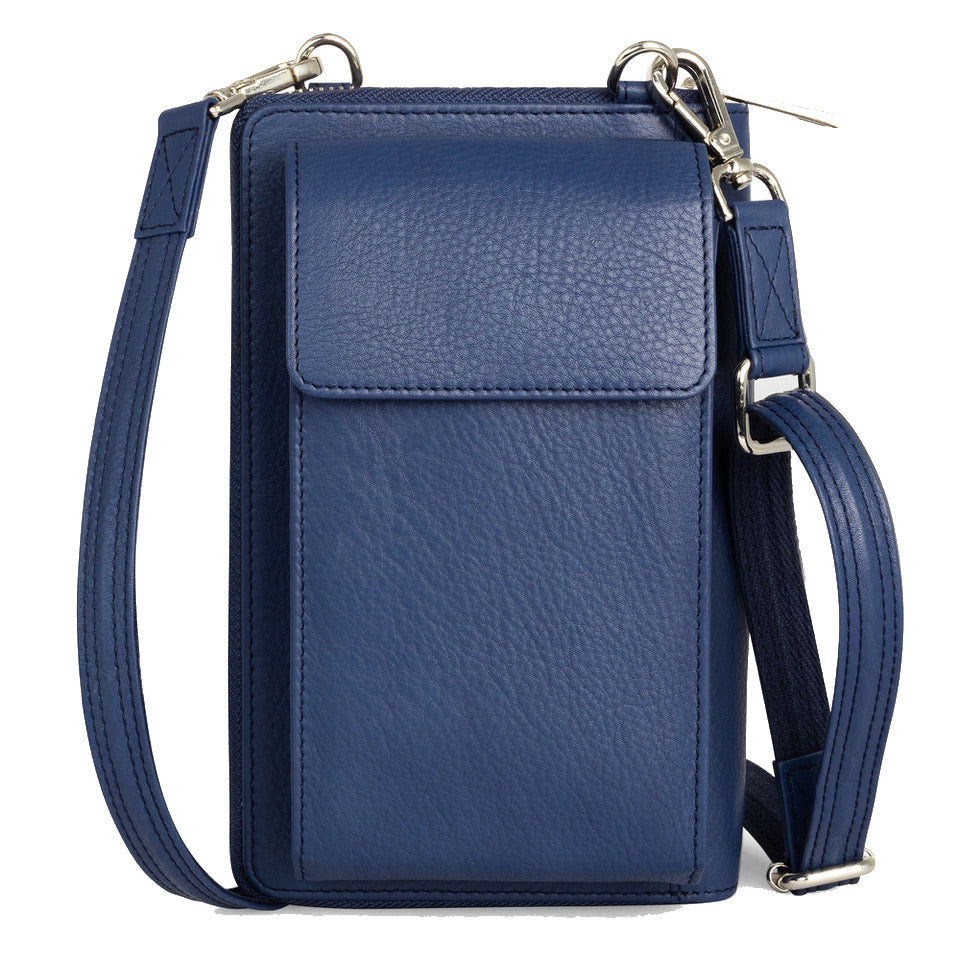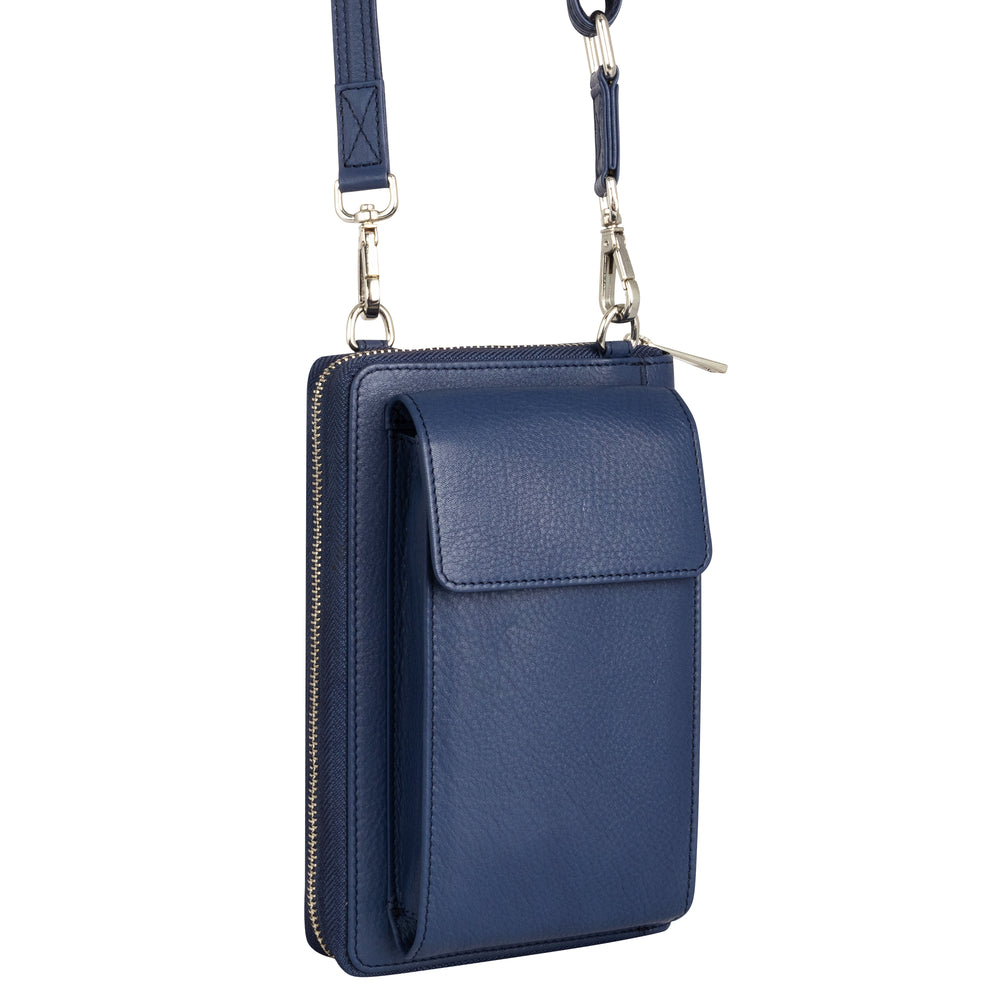Key Takeaways
- Losing your wallet can trigger a strong emotional response and a sense of vulnerability.
- This experience presents an opportunity to respond intentionally rather than with panic.
- Transforming the situation into purposeful action helps you navigate the challenge effectively.
- Facing such disruptions can teach valuable lessons about living boldly and with resilience.
Losing Your Wallet, A Story of Challenge, Choice, and Living Boldly
The moment hits like a cold wave, patting your pocket, checking your bag, that sinking realization that your wallet is gone. In that instant, you're not just missing cards and cash; you're confronting vulnerability in its rawest form. Yet within this disruption lies an opportunity to respond with intention, to transform panic into purposeful action, and to discover what it truly means to carry life boldly.
I've watched countless Bull Guard customers navigate this exact scenario, and what strikes me most is how those prepared with quality gear, wallets built with RFID protection, durable construction, and thoughtful organization, recover faster and with greater confidence. A Bull Guard wallet isn't just worn; it is lived in, patinas with experience, and becomes a trusted expression of who you are, strong, grounded, and always ready for anything. This guide delivers your complete recovery roadmap: immediate action steps, protection strategies, and prevention insights that turn today's setback into tomorrow's strength.
Emergency Action Window: The first 10 minutes after realizing your wallet is missing are critical. Quick action can mean the difference between minor inconvenience and major financial disruption.
First 10 Minutes, Immediate Actions to Take When You Realize Your Wallet is Lost

If you’re wondering what to do when you lost your wallet, the first 10 minutes are crucial for minimizing risk and setting yourself up for a smooth recovery. Take a deep breath, retrace your steps, and begin securing your accounts before panic sets in.
Securing Your Money, How to Freeze, Lock, or Cancel Credit and Debit Cards
Understanding your options here prevents both fraud and unnecessary hassle. A temporary lock preserves your card number while blocking transactions, ideal when you're 70% sure you'll find your wallet. A freeze offers similar protection with slightly more security. Canceling permanently closes the account and requires new card issuance, but provides absolute protection when what to do when you lost your wallet becomes a confirmed theft situation.
| Action | Response Time | Reversible | New Card Needed | Best For |
|---|---|---|---|---|
| Temporary Lock | Instant | Yes | No | Likely to find wallet |
| Account Freeze | Under 5 minutes | Yes | No | Uncertain situation |
| Cancel & Replace | Immediate block | No | Yes (1-3 days) | Confirmed loss/theft |
Most major banks now offer instant card controls through their mobile apps. Navigate to "Card Management" or "Security Settings" and you'll typically find toggle switches for transactions, ATM access, and online purchases. This granular control lets you block risky transaction types while maintaining access for essential purchases if you have backup payment methods.
Federal law limits your liability to $50 for credit card fraud if reported within 60 days, and zero liability for debit card fraud reported within two business days. However, debit card liability jumps to $500 if you wait 2-60 days, and becomes unlimited after 60 days. This legal framework makes immediate action non-negotiable for debit cards, while giving you slightly more flexibility with credit cards.
Document every call you make to financial institutions. Note the representative's name, confirmation numbers, and the time of each conversation. This documentation becomes crucial if disputes arise or if you need to reference specific actions taken during the recovery process.
Pro Tip: Many banks offer temporary digital cards through their mobile apps, allowing you to make purchases while waiting for physical replacements. Download your bank's app if you haven't already, it's your fastest path to financial access.
Filing Official Reports, When and How to Involve Police, DMV, SSA, and Beyond
Filing a police report creates an official record that protects you legally and helps with replacement processes. Not every jurisdiction requires reports for simple wallet loss, but if you suspect theft or need documentation for insurance claims, contact your local police department immediately.
When filing your report, bring any evidence of the loss: receipts from your last known location, bank statements showing your final transactions, and a list of everything in your wallet. The police will issue a report number, keep this safe, as many institutions require it for expedited replacements or fraud protection.
For your driver's license, contact your state's DMV within 24 hours. Most states allow temporary driving with a receipt showing you've applied for replacement, but laws vary significantly. California residents can drive with a temporary paper license, while New York requires you to carry additional identification alongside the temporary document.
If your Social Security card was in your wallet, notify the Social Security Administration immediately. While the card itself has limited direct value, combined with other personal information, it becomes a powerful tool for identity thieves. The SSA can flag your number for suspicious activity and provide guidance on monitoring your credit reports.
Document every official contact you make. Government agencies move slowly, but having reference numbers and contact names accelerates follow-up calls and prevents you from repeating your story multiple times.
Identity and Credit Protection, Preventing Long-term Harm

A credit freeze stops new accounts from being opened in your name, and it's free at all three major credit bureaus. Unlike fraud alerts that last 90 days, a credit freeze remains until you lift it. Contact Experian, Equifax, and TransUnion directly through their websites or phone lines to establish freezes within hours of your wallet loss.
Fraud alerts offer a middle-ground approach, requiring creditors to verify your identity before opening new accounts. While less restrictive than freezes, they provide meaningful protection for those who frequently apply for credit or loans. Initial fraud alerts last one year and can be renewed.
| Protection Type | Setup Time | Duration | Best For |
|---|---|---|---|
| Credit Freeze | 15-30 minutes | Until you lift it | Maximum security, infrequent credit applications |
| Fraud Alert | 5-10 minutes | 1 year (renewable) | Active credit users, moderate protection |
| Credit Monitoring | 30 minutes | Ongoing subscription | Real-time alerts, comprehensive tracking |
Request your free annual credit report immediately after wallet loss, then monitor it quarterly for the next year. Look for unfamiliar accounts, incorrect personal information, or inquiries you didn't authorize. Early detection prevents small fraudulent activities from becoming major financial disasters.
Change passwords and PINs for all accounts connected to cards in your lost wallet. Even if your cards had chip protection, criminals can sometimes extract enough information to attempt online purchases or account access. Update your most sensitive accounts first: banking, email, and any stored payment methods on shopping sites.
Consider credit monitoring services if your wallet contained extensive personal information. While not necessary for everyone, these services provide real-time alerts about new account openings, credit inquiries, and suspicious activities that manual monitoring might miss.
Replacing Essentials, ID Cards, Health Insurance, Memberships, More
Driver's license replacement varies dramatically by state, but most offer online, mail, or in-person options. Online replacements typically take 7-10 business days, while in-person visits at DMV offices can provide temporary licenses immediately. Bring your Social Security card, birth certificate, or passport as primary identification, check your state's specific requirements before visiting.
Health insurance cards require different approaches depending on your provider. Major insurers like Blue Cross, Aetna, and UnitedHealth offer digital cards through mobile apps, providing immediate access to your coverage information. Call your provider's customer service line for expedited physical card replacement, which usually arrives within 5-7 business days.
Work badges and access cards need immediate attention for security reasons. Contact your employer's security department or HR immediately, many companies can deactivate lost cards and issue temporary replacements within hours. Some organizations require police report numbers before issuing new credentials.
For membership cards, gym passes, and loyalty programs, most organizations can look up your account using your name and phone number. Many now offer digital alternatives through smartphone apps, eliminating the need for physical card replacement entirely.
Create a replacement checklist from memory while the loss is fresh. Include library cards, transit passes, student IDs, and any specialized access cards for buildings or services. Having this comprehensive list prevents forgotten items from surfacing weeks later when you need them most.
Coping with Lost Cash & Preventing Financial Loss
Lost cash rarely gets recovered, making it the most permanent loss in your wallet. While painful, focus your energy on protecting what matters most, your financial accounts and identity. If you carried significant cash, document the estimated amount in your police report. While homeowner's or renter's insurance rarely covers lost cash, having an official record protects you if the wallet surfaces later with money missing.
When your wallet is eventually found and returned, immediately verify all contents before celebrating. Count cash, check gift card balances, and confirm all cards are present. If anything is missing, contact police immediately, this transforms your case from "lost property" to theft, which carries different legal protections and potential insurance coverage.
Tracing and Tracking, Using Technology and Modern Wallet Features to Find What's Lost

Modern wallet tracking transforms the helpless feeling of loss into actionable recovery steps. GPS trackers like AirTags, integrated into wallets with dedicated slots, provide real-time location data that can lead you directly to your missing essentials.
If your tracker shows movement, never approach the location alone. Instead, provide the GPS coordinates to local police, who can safely investigate. Many Bull Guard customers report successful recoveries within hours using this approach, compared to days or weeks of traditional searching.
| Recovery Method | Success Rate | Time to Results | Safety Level |
|---|---|---|---|
| Manual Searching | 35-40% | Hours to days | High |
| GPS Tracker | 75-80% | Minutes to hours | High with proper protocol |
| App-based Locators | 60-65% | Variable | Medium |
Bull Guard wallets with integrated AirTag slots provide seamless tracking without compromising the wallet's slim profile. The leather naturally protects the tracker while maintaining full signal strength, giving you peace of mind whether you're navigating city streets or mountain trails.
Avoiding Scams, Staying Secure in the Aftermath
Red Flag Alert: Legitimate banks will never ask for your PIN, full Social Security number, or passwords over the phone. If someone claims they found your wallet and requests personal information to "verify ownership," hang up immediately.
Post-loss scams spike because fraudsters know you're vulnerable and expecting calls from financial institutions. Common schemes include fake "wallet recovery" calls requesting verification details, phishing emails mimicking your bank, and "helpful strangers" offering to return your wallet for a fee paid through untraceable methods.
Always initiate contact with your bank using numbers from official websites or the back of your cards, never trust incoming calls claiming urgency. Report suspicious contact attempts to the Federal Trade Commission and your local police, as these often indicate organized fraud rings targeting recent loss reports. For more on protecting yourself, see this external resource on lost wallet steps.
Reclaiming Self and Routine, Managing Emotional Stress, Regaining Control
Losing your wallet strikes deeper than mere inconvenience, it disrupts your sense of security and control. I've seen customers describe feeling "naked" or "untethered" without their familiar leather companion, and these feelings are completely valid.
Channel this disruption into intentional action. Create a written timeline of where you've been, what you've lost, and steps you're taking. This transforms chaos into manageable tasks while providing crucial documentation for reports and recovery efforts.
"After losing my wallet in Denver, I realized I'd been carrying my life carelessly. Now I have a designated 'wallet home' by my keys, and my Bull Guard holds only essentials. That loss taught me to carry life boldly, not recklessly." - Sarah, Bull Guard customer
Use this moment to evaluate what you truly need to carry daily. Most people discover they've been hauling unnecessary cards, expired memberships, and sentimental items that create bulk without adding value. Rebuilding your wallet becomes an opportunity to curate your essentials intentionally. For more on optimizing your carry, check out this guide to bifold wallets with flip up ID windows.
Building a Loss-Proof Routine, Preventing Wallet Loss in the Future

Prevention beats recovery every time. Establish a "wallet ritual", the same pocket, same placement, same checking pattern every time you sit, stand, or transition locations. This muscle memory becomes your first line of defense against future losses.
Carry only what you'll use that day. Your daily wallet should contain one primary credit card, one backup card, your driver's license, health insurance card, and minimal cash. Leave store loyalty cards, gym memberships, and sentimental photos at home or store digital copies on your phone.
Essential Daily Carries:
- Primary credit/debit card
- Driver's license or ID
- Health insurance card
- $20-40 emergency cash
- One business card (yours)
Leave at Home:
- Social Security card
- Passport (unless traveling)
- Multiple credit cards
- Store loyalty cards
- Sentimental photos
Invest in RFID-blocking technology like a magnetic money clip card case or a bifold with flip up ID for added security. For more tips on protecting your wallet and identity, see this authoritative guide on what to do if you lose your wallet.
Frequently Asked Questions
What are the immediate steps I should take within the first 10 minutes after losing my wallet?
Take a deep breath and stay calm to respond intentionally. Retrace your steps quickly, check common places, and notify your bank or card issuers to prevent unauthorized use. Acting swiftly can minimize risk and set the stage for a smoother recovery.
How do I decide whether to temporarily lock, freeze, or cancel my credit and debit cards after losing my wallet?
Assess your situation by considering how likely it is your wallet was stolen versus misplaced. If you suspect theft, immediately cancel cards to prevent fraud. For uncertain cases, temporarily locking or freezing cards offers a reversible way to protect your accounts while you search.
When and how should I file official reports with the police, DMV, or Social Security Administration after losing my wallet?
File a police report promptly if you believe your wallet was stolen or contains sensitive identification. Notify the DMV to replace your driver’s license and the Social Security Administration if your Social Security card was lost. These steps help protect your identity and provide documentation for future claims.
What strategies can I use to protect my identity and credit following the loss of my wallet?
Monitor your credit reports regularly for unusual activity and consider placing a fraud alert or credit freeze with credit bureaus. Change passwords for financial accounts and be vigilant against phishing scams. Using RFID-blocking wallets like Bull Guard can also reduce risk of electronic theft in the future.










